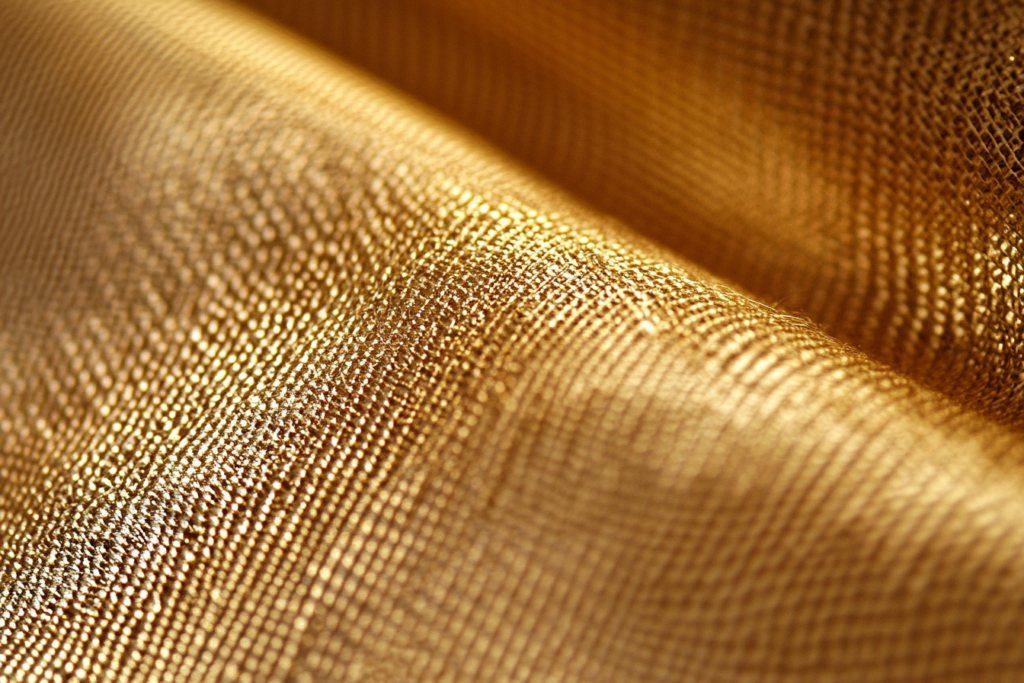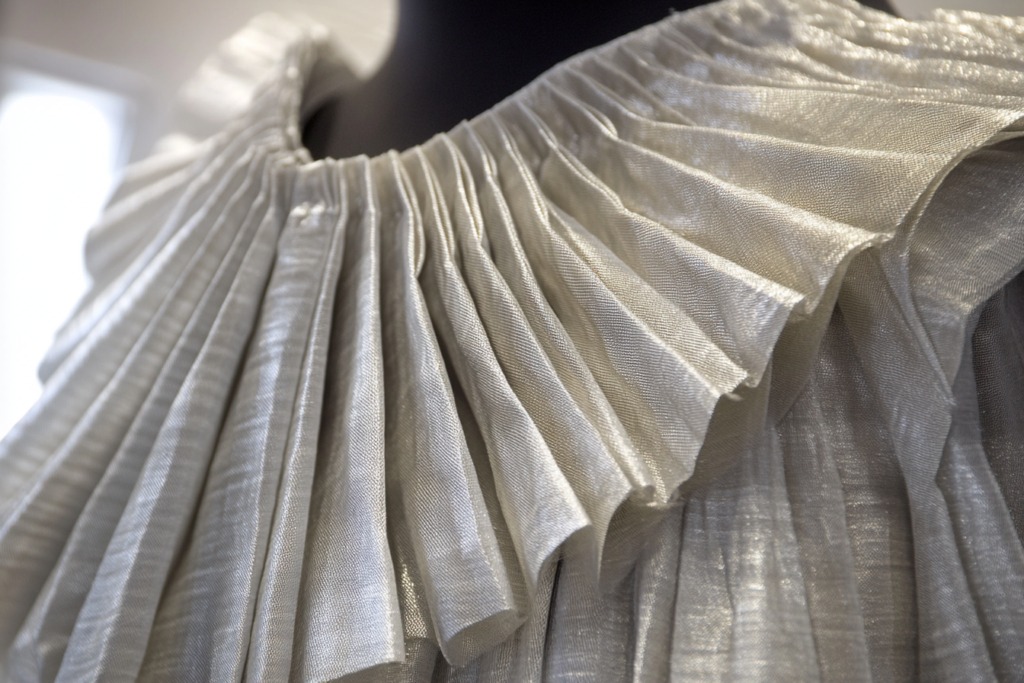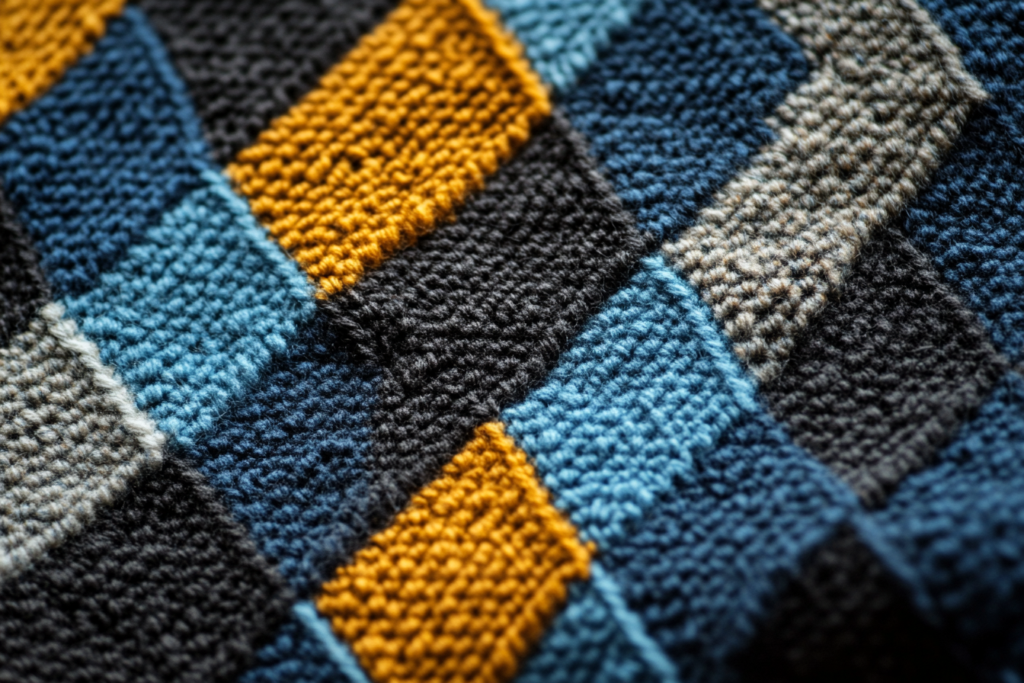Introduction: What is Crosswise Grain?
In fabric construction, crosswise grain refers to the yarn that runs perpendicular to the warp yarns. It is an essential aspect of fabric structure and plays a crucial role in determining how a fabric behaves when cut and sewn into garments. Understanding the crosswise grain is essential for fashion designers, textile manufacturers, and anyone working with fabric to ensure proper fit, drape, and durability of the final product.
The crosswise grain is also known as the weft or filling yarn. Unlike the warp yarns, which run vertically (lengthwise) along the fabric, the crosswise grain runs horizontally, from one side of the fabric to the other. This orientation affects how the fabric stretches, wrinkles, and drapes, making it a key factor in garment construction.


How Crosswise Grain Affects Fabric Behavior
- Stretch and Flexibility:
- Fabrics generally have more stretch along the crosswise grain than along the lengthwise (warp) grain. This can affect how the fabric conforms to the body, especially in garments like pants, skirts, and tops. Understanding this characteristic is crucial when designing clothes that require flexibility or a close fit.
- Drape and Flow:
- The crosswise grain influences the way the fabric drapes and flows. Depending on the fabric type, the crosswise grain can impact the garment’s overall appearance. For instance, in flowing dresses or skirts, the crosswise grain contributes to the soft, fluid movement of the fabric.
- Resistance to Wrinkling:
- Fabrics with strong warp yarns tend to be more resistant to wrinkling along the crosswise grain, while those with a looser weave might wrinkle more easily. The balance between the warp and weft yarns determines the fabric’s overall durability and comfort.
- Pattern Alignment:
- When cutting fabric, the crosswise grain affects how patterns align with the fabric. For example, patterns like plaids, stripes, and prints will behave differently if cut along the crosswise grain versus the lengthwise grain, impacting the final look of the garment.
The Importance of Crosswise Grain in Garment Construction
- Fit and Comfort:
- The crosswise grain plays a role in how a garment fits and moves. Since fabrics tend to stretch more along the crosswise grain, understanding this characteristic helps in choosing the right fabric for the right garment, ensuring a proper fit that allows comfort and mobility.
- Seam and Edge Finishing:
- When sewing fabric, seams along the crosswise grain may be more prone to stretching or shifting. Understanding how the crosswise grain behaves ensures that proper seam finishing techniques, such as stay-stitching or edge binding, are used to prevent fabric distortion.
- Fabric Usage and Pattern Placement:
- Designers consider crosswise grain when placing patterns on fabric to ensure that the fabric behaves in the intended way. For example, a skirt might be cut so that the hemline follows the crosswise grain, allowing it to have a fuller, more structured shape. Conversely, a soft blouse might be cut with the grain running vertically for a more fluid appearance.
How to Identify Crosswise Grain in Fabric
- Look at the Weave:
- Crosswise grain yarns are usually easier to spot by examining the weave of the fabric. These yarns run horizontally across the fabric, while the warp yarns run vertically.
- Check the Fabric’s Edge:
- A fabric’s crosswise grain is usually found along the edge of the fabric where the weft yarns are finished. Some fabrics may have selvage edges that help distinguish the crosswise grain direction.
- Test the Stretch:
- The crosswise grain generally has more stretch than the lengthwise grain. Gently pull on the fabric from side to side, and you’ll feel a difference in flexibility compared to pulling along the fabric’s length.
Crosswise Grain vs. Lengthwise Grain: Key Differences
While the crosswise grain runs perpendicular to the warp yarns, it is equally important to understand how it compares to the lengthwise grain (warp yarns). Here’s a breakdown:
| Aspect | Crosswise Grain | Lengthwise Grain |
|---|---|---|
| Direction | Runs horizontally across the fabric | Runs vertically from top to bottom of the fabric |
| Stretch | Has more stretch and flexibility | Usually more stable with less stretch |
| Durability | More prone to distortion, but adds softness | Stronger, more stable, resistant to fraying |
| Fabric Behavior | Affects drape and flow | Affects structure and strength |
Practical Applications of Crosswise Grain
- Garment Construction:
- The crosswise grain is especially important when designing flowing garments like skirts, dresses, and blouses. It contributes to the garment’s ease of movement and drape, giving it a soft, fluid quality.
- Fabric Manipulation:
- Some fabric manipulation techniques, such as pleating or gathering, involve working with the crosswise grain to achieve the desired effect. In pleats, the crosswise grain helps maintain the shape and adds volume.
- Pattern Cutting:
- When cutting patterns from fabric, designers often use the crosswise grain to determine how the fabric will behave when stitched together. This ensures that the fabric moves the way it is intended and that the finished garment fits and flows properly.
Conclusion: Understanding Crosswise Grain for Better Fabric Use
The crosswise grain is an integral part of fabric structure that directly impacts how fabric behaves, stretches, and fits. By understanding the crosswise grain, fashion designers and textile experts can make informed decisions when selecting materials and constructing garments. Whether it’s for creating a tailored suit or a flowing dress, knowledge of the crosswise grain ensures that fabric behaves in the desired way, enhancing the final product’s quality, fit, and appearance.



